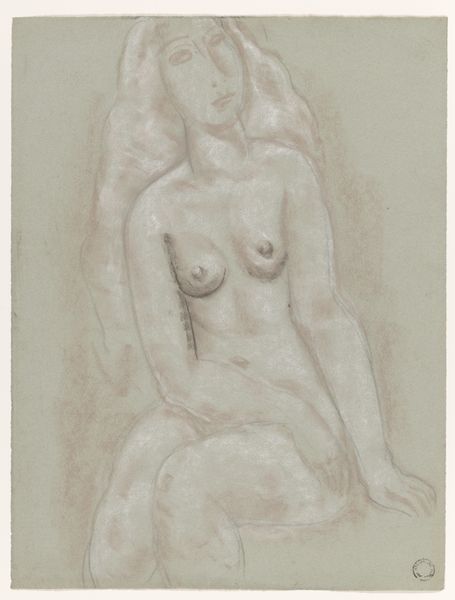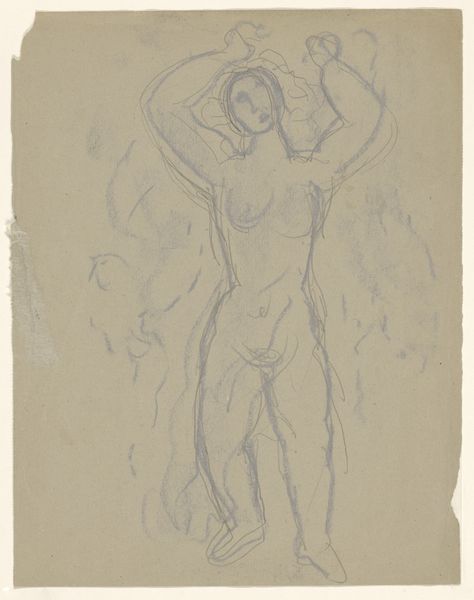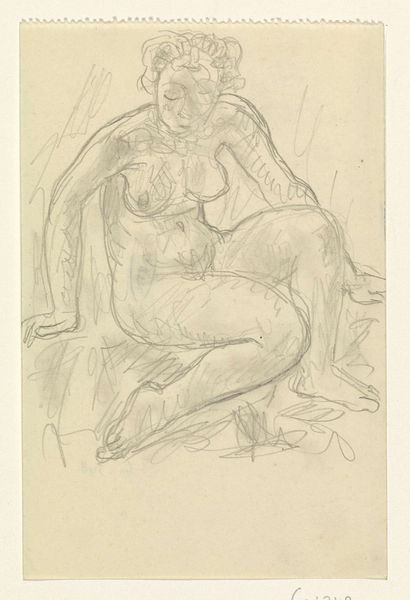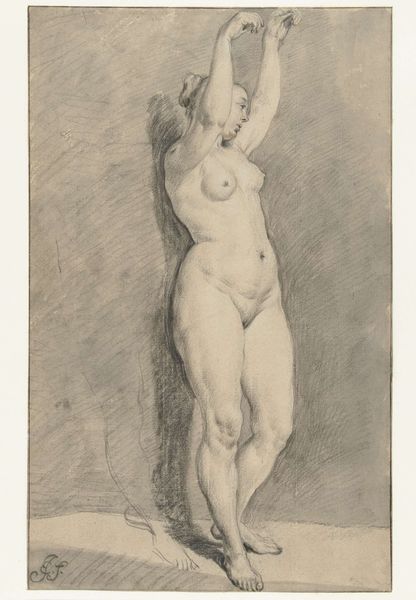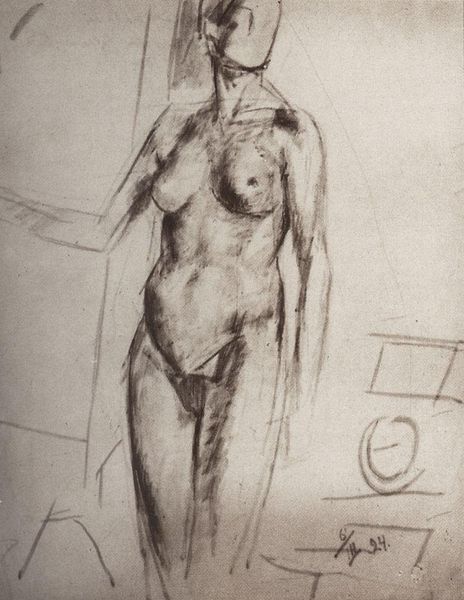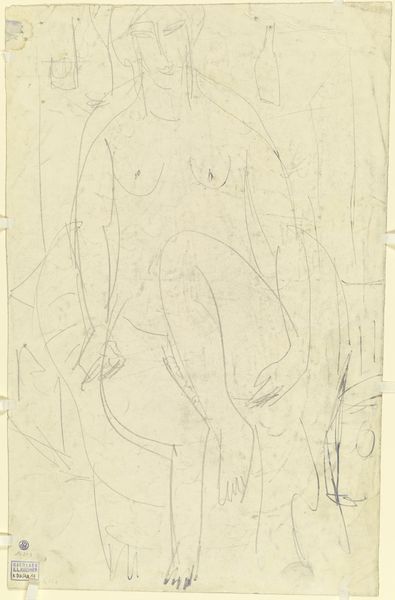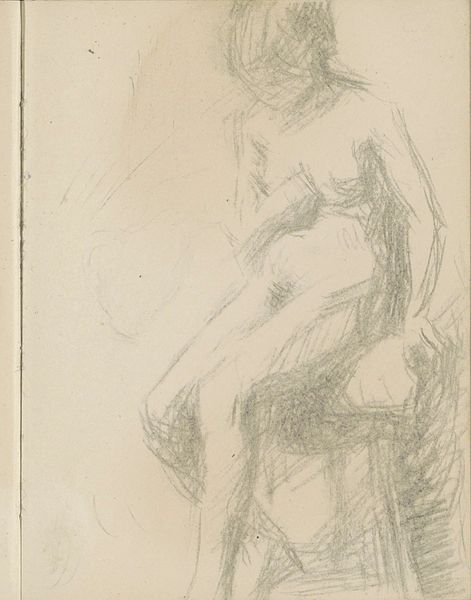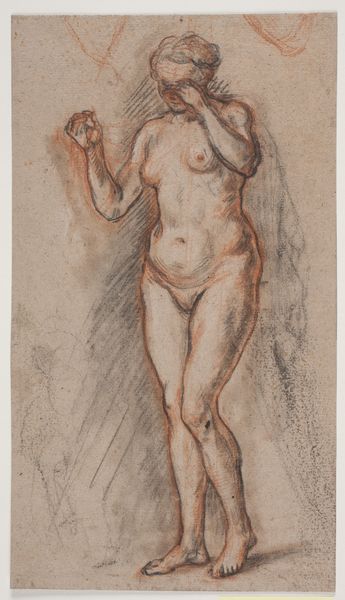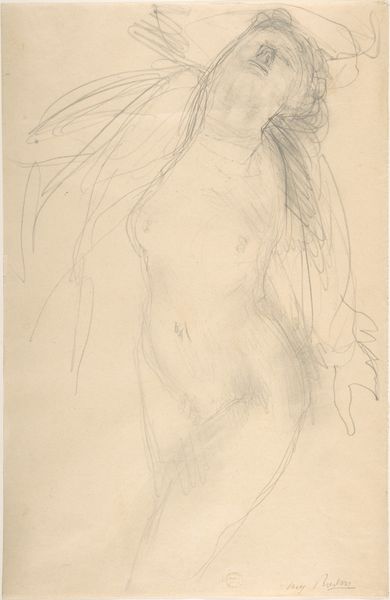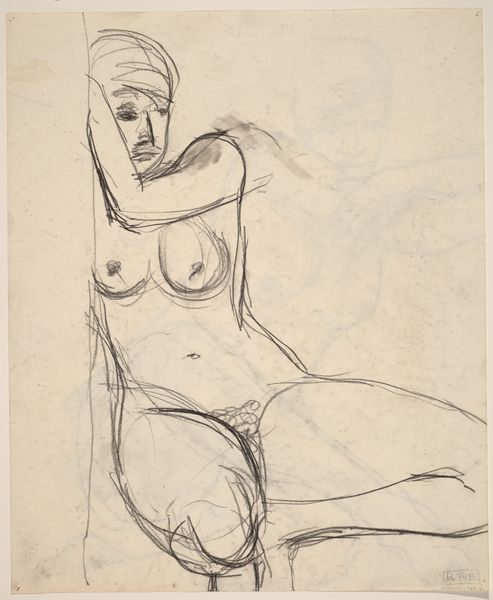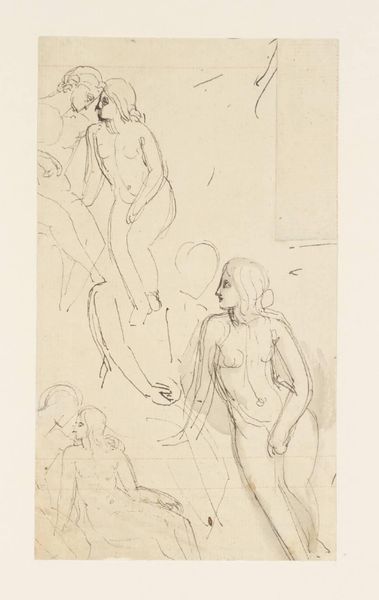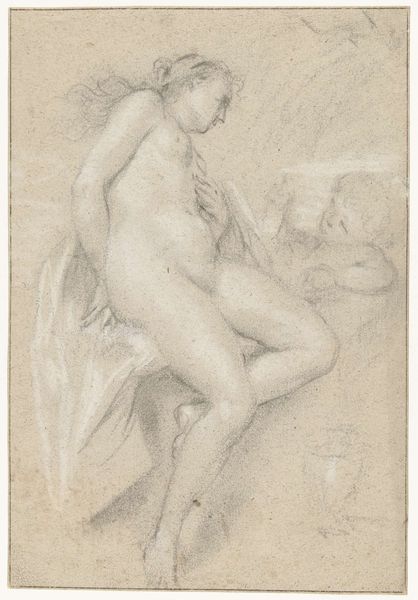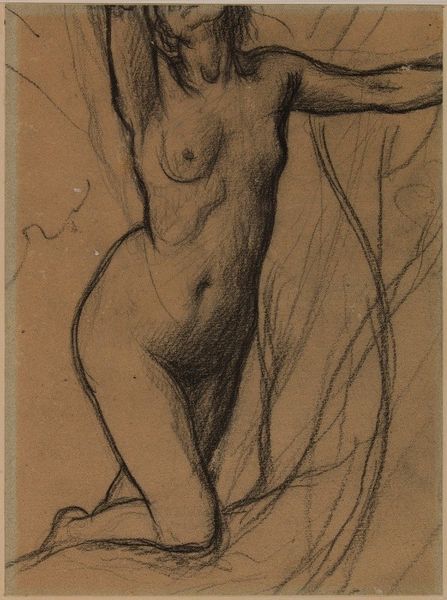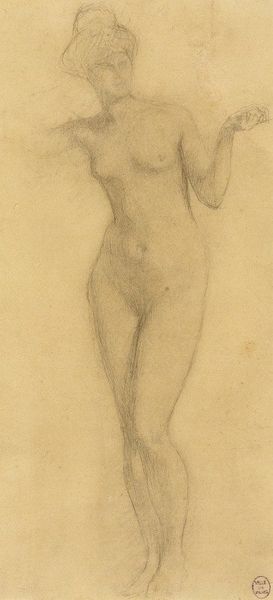
#
pencil drawn
#
amateur sketch
#
toned paper
#
facial expression drawing
#
light pencil work
#
pencil sketch
#
personal sketchbook
#
pencil drawing
#
portrait drawing
#
pencil work
Dimensions: height 194 mm, width 137 mm
Copyright: Rijks Museum: Open Domain
Curator: Immediately I feel the figures’ vulnerability, a sense of quiet desperation maybe. The subdued tones accentuate that rawness. Editor: Indeed. This is a pencil drawing by Leo Gestel, made in 1931. It’s titled "Twee geknielde naakten," or "Two Kneeling Nudes," and we're fortunate enough to have it here at the Rijksmuseum. Curator: Gestel’s style is interesting; it has the intimacy of something almost classical, and simultaneously feels very modern. I think his visual vocabulary can show how these ideas shift over time. Editor: Precisely. The kneeling figure with her hands in her hair evokes traditional poses of penitence, but there's something distinctly personal about it. Look at the line work – it's almost tentative. Curator: Yes, the line is so raw it verges on unfinished, as though Gestel meant to conceal or refine something which should stay ambiguous. It evokes psychological openness and vulnerability. What about the presence of the second figure? Editor: An enigma. It's far less defined, more spectral. It creates a backdrop, an almost dreamlike space for the primary figure’s emotions to resonate. Perhaps this emphasizes societal or cultural elements to consider, rather than a fully fleshed, separate body in its own right. Curator: Exactly, almost as if Gestel wanted to communicate both individuality and common cause: to reflect that sense of social suffering through this pairing. Its power stems, in part, from Gestel's involvement in contemporary political movements. Editor: What is especially interesting about this is that although some have tried to downplay Gestel’s socialist activism and beliefs, the mood in this sketch appears to suggest otherwise, an idea which requires careful unpacking to address thoroughly. Curator: Well, that is exactly what artworks in institutions should encourage: close looking and lively interpretation. Gestel created something striking and resonant which reveals its historical setting in both direct and elusive ways. Editor: Ultimately Gestel compels us to reflect on this complexity, these layers of visibility and cultural memory, and that's really the drawing’s continuing strength.
Comments
No comments
Be the first to comment and join the conversation on the ultimate creative platform.
